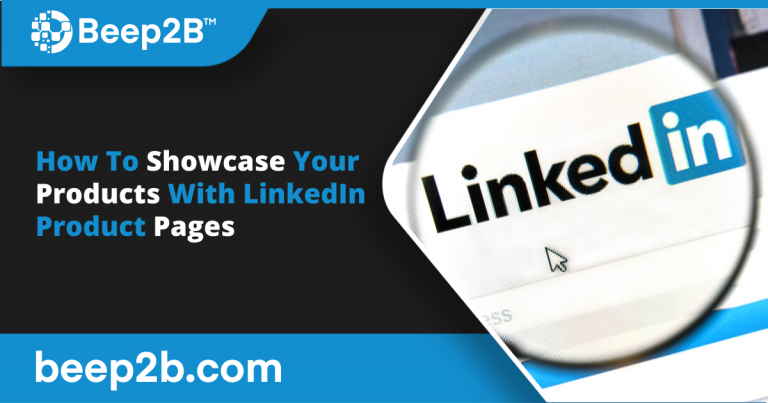There is a tool on LinkedIn for marketing your products. If you have not heard of LinkedIn’s Product Pages, now is the time to learn about this powerful tool.
With Product Pages, you can increase brand awareness and showcase your products to your target audience.
Today, we’ll dive into everything you need to know about Product Pages.
What are LinkedIn Product Pages?
In December 2020, LinkedIn introduced product pages. The purpose of product pages is to create a trustworthy source of information about your products and brand. The LinkedIn Product Page is focused on “generating highly qualified leads and building a product community.” Via the product page you can:
- Leverage media including photos and videos.
- Gather rating and reviews
- Drive action with a CTA button (request demo, try now, contact us, learn more, download now, get started)
Upon visiting your product page, LinkedIn users are invited to leave a review. The reviewer must confirm that they are a valid customer before rating your product on a scale from 1 to 5. The review can be up to 500 characters, and LinkedIn urges members to detail the pros and cons of the product. Users may also select key strengths of the product, picking from Easy Setup, Easy to Use, Good Support, and Innovative Features.
Everyone on LinkedIn can see the reviewer’s name and profile headline. Employees can also review your products and LinkedIn will detail their role as an employee. Pages with at least 5 reviews will display an aggregated review score above the reviews.
Right now, the Product Pages only feature tangible products. Currently, you can not create pages for services, but LinkedIn plans to add a service marketplace in the future.
Creating a LinkedIn Product Page
- You need a super admin or content admin access to a company page.
- Open the “Products” tab and click “Add Product.”
- Enter the product name. This cannot be changed once you’ve added the product.
- LinkedIn creates product pages based on your existing data. You can edit the product description and information.
- Choose a CTA. Insert your landing page URL.
- Upload media to showcase product features and grab the attention of users. This is optional but highly recommended. You’re able to upload pictures and videos or embed videos from YouTube and Vimeo. LinkedIn suggests adding three videos (under three minutes long) and two photos.
- Add high-profile customers. LinkedIn allows you to add up to 21 organizations or businesses that have used your products and have existing LinkedIn company pages. You cannot add individual profiles at this time. If possible, add a variety of customers who reflect your target audience, and make sure to get permission from them first.
- Submit your Product Page for review. It may take up to 2 weeks for LinkedIn to review. The Products tab will appear on your company page once LinkedIn has approved it. You can add a Product Page for each product, and customers will see the alphabetical list of products under the Products tab on your company page.
Product Page Examples
According to LinkedIn, the top Product Pages do the following:
- Identify who their product is for
- Include valuable product media
- Source a minimum of five reviews
- Add listed customer logos
LinkedIn also provides examples of best-in-class Product Pages. To get a feel for what makes a successful page, check out the following:
How are Product Pages Different from Other Review Sites?
While it is still good to source reviews from other sites, there are key advantages to using LinkedIn Product Pages. Many review sites allow anonymous reviews that can be difficult to verify. On the other hand, LinkedIn Product Pages creates a trusted community that adds value to users, buyers, and brands.
Users are able to share their experiences and learn from each other. Buyers then have the information they need to make informed decisions. Brands can leverage the trusted community of product advocates and experts to drive growth and product adoption.
LinkedIn is the most trusted social media platform for the 3rd year in a row according to Business Insider. All reviews are directly linked to a LinkedIn profile. Ultimately, Product Pages build upon LinkedIn’s trusted community and strengthen connections. Based on LinkedIn’s stringent processes for monitoring member profiles, fake reviews will be unlikely and quickly handles.
Disputing Customer Reviews on a LinkedIn Product Page
Getting negative feedback is normal and important, but there are times when you may feel it’s appropriate to dispute a review. LinkedIn members can report a review by clicking the three dots on the right and selecting “Report This Review.” While the LinkedIn Product Page setup minimizes the likelihood of fake reviews, there is still a way to dispute reviews.
The three types of reviews you may dispute include:
- Biased/sponsored. When someone reports a comment because they think the reviewer is being paid. As of right now, LinkedIn will not take action against these types of comments.
- Provably false. If a customer makes a claim that is able to be proven false, then LinkedIn will delete the comment.
- Slander/libel. Slander includes false accusations against your company or employees. LinkedIn will remove these comments.
Conclusion
LinkedIn Product Pages are a great tool to use on LinkedIn. You can gather customer reviews and encourage customers to follow your product hashtags. Reviews should be your top priority once your product page is approved.
Product Pages are far from final. LinkedIn is likely to continue adding important functionality and integration with the newsfeed. Now is the time to start setting up Product Pages and gathering reviews on LinkedIn.


